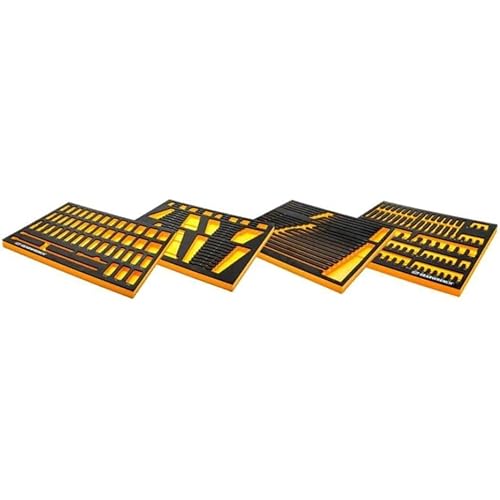HomeRight C800971.A Super Finish Max, Includes 3 Brass Spray Tips, 3 Spray Patterns, Easy to Clean HVLP Paint Sprayer, Great for Furniture, Cabinets, Trim & More, Sprays Stains, Sealers & Latex Paints










Buy Now, Pay Later
- – 6-month term
- – No impact on credit
- – Instant approval decision
- – Secure and straightforward checkout
Ready to go? Add this product to your cart and select a plan during checkout.
Payment plans are offered through our trusted finance partners Klarna, Affirm, Afterpay, Apple Pay, and PayTomorrow. No-credit-needed leasing options through Acima may also be available at checkout.
Learn more about financing & leasing here.
Selected Option
30-day refund/replacement
To qualify for a full refund, items must be returned in their original, unused condition. If an item is returned in a used, damaged, or materially different state, you may be granted a partial refund.
To initiate a return, please visit our Returns Center.
View our full returns policy here.
Recently Viewed
Size: Super Finish Max
Features
- PAINT SPRAYER FOR COUNTLESS DIY PROJECTS: The HomeRight Super Finish Max paint sprayer offers the ultimate DIYing experience. Its great for applying a great finish on small to large projects like fences, decks, furniture, cabinets, dressers and more.
- ADJUSTABLE SETTINGS TO SUIT ANY PROJECT: You can adjust the air cap to spray horizontal, vertical, and round. You can also adjust the material flow control knob to quickly increase or decrease the material output
- MORE POWER=SPRAY MORE MATERIALS: Offers 450 watts of powerful spraying experience. It sprays a wide variety of paints and stains such as chalk type paint, milk paint, latex paints, enamels, primers, clear sealer, polyurethane, stain and varnish
- 3 BRASS SPRAY TIPS: Brass spray tips offer superior performance over plastic counterparts. Use the 4.0mm (red) tip for primer/latex paint, 2.0mm (green installed on sprayer) for latex and chalk paint, and 1.5 mm (blue) for stains and sealers.
- U.S. BASED CUSTOMER SERVICE AND 2 YEAR WARRANTY: Please call or chat with our U.S based customer service team for quick and efficient assistance. Were proud of our products, which is why the Super Finish Max is backed by a 2 year warranty
Description
The new Super Finish Max does it all. From furniture and cabinets to fences and walls, this sprayer can cover a wider array of projects and coatings with less thinning and hassle. This High Volume, Low Pressure (HVLP) sprayer has a turbine motor, which means that an air compressor isn’t needed! The six available spray tip sizes (3 included) allow for ultimate customization of paint flow for all of your projects! The two different air caps allow for a wide or fine spray pattern and the volume control knob provides further customization of paint flow. The Super Finish Max is ideal for oil or water based materials such as: chalk type paint, milk paint, latex paints, enamels, primers, clear sealer, polyurethane, stain and varnish. 450 watts of power sprays thicker paints with less thinning! The newly-designed pickup tube and cup vent allow for quicker and easier clean-up. The built-in access door makes for easy inlet air filter changes and the large 39-ounce container capacity means less stopping to refill. Includes: Super Finish Max, container lid, cleaning brush, 4. 0 mm nozzle and tip (red), 2. 0 mm nozzle and tip (green), 1. 5 mm nozzle and tip (blue), wrench, wide spray pattern cap (yellow), fine spray pattern cap (black). . MATERIALS: Spray oil or water based materials: chalk and milk paint, latex paints, enamels, primers, clear sealer, polyurethane, stain and varnish.
Brand: HomeRight
Tank Volume: 40 Fluid Ounces
Color: Multi
Recommended Uses For Product: Painting
Material: Brass, Plastic
Brand: HomeRight
Tank Volume: 40 Fluid Ounces
Color: Multi
Recommended Uses For Product: Painting
Material: Brass, Plastic
Item Weight: 2.76 Pounds
Product Dimensions: 12"W x 13.5"H
Style: Super Finish Max
Power Source: Corded Electric
Included Components: Nozzle Adaptor, Cleaning Kit, Instruction Guide, Wrench, 1.5mm Spray Tip, 2.0mm 4.0mm Tip
Model Name: Super Finish Max
UPC: 012564009719
Global Trade Identification Number: 19
Manufacturer: HomeRight
Part Number: C800971.A
Item Weight: 2.76 pounds
Country of Origin: Taiwan
Item model number: Finish Max C800971
Is Discontinued By Manufacturer: No
Size: Super Finish Max
Pattern: Sprayer
Voltage: 120
Wattage: 450 watts
Item Package Quantity: 1
Cutting Diameter: 3.5 Inches
Special Features: Low Pressure, High Volume
Batteries Included?: No
Batteries Required?: No
Assembled Diameter: 3.5 Inches
Date First Available: June 14, 2017
Frequently asked questions
To initiate a return, please visit our Returns Center.
View our full returns policy here.
- Klarna Financing
- Affirm Pay in 4
- Affirm Financing
- Afterpay Financing
- PayTomorrow Financing
- Financing through Apple Pay
Learn more about financing & leasing here.
Similar Products

Graco Magnum 262800 X5 Stand Airless Paint Sprayer, Blue

Graco Magnum 262805 X7 Cart Airless Paint Sprayer, Gray
Top Amazon Reviews



























